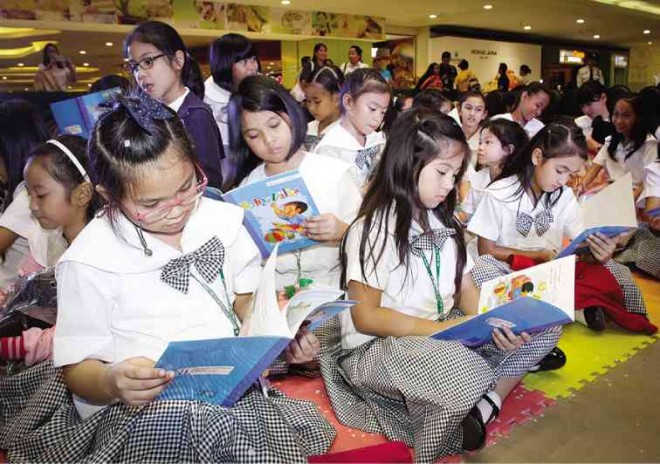Malls become reading venues for a day

HUNDREDS of elementary students from public and private schools participate in the annual book reading day at SM Megamall.
SM Supermall branches around the country hosted recently National Children’s Book Reading Day.
National Children’s Book Reading Day is held every year in partnership with the National Book Development Board, Calidad Humana, Vibal Publishing Inc. and the Department of Education.
This year’s reading session was launched at SM Megamall in Mandaluyong City. It was attended by hundreds of grade school students from public and private schools.
Book reading was then conducted in the rest of the 52 SM Supermalls and four SMDC malls in the Philippines, as well as in seven malls in China.
The annual event aims to help improve reading proficiency and instill love for reading in grade school students.
Article continues after this advertisementAt the launch, Mandaluyong City Councilor Charisse Marie Abalos and magician Jervey “Flooch” Capili read children’s books by Filipino authors that teach kids the value of friends and playing outdoors.
Article continues after this advertisementThousands of kids in the different SM malls read children’s books from Vibal Publishing Inc., the mall chain’s partner in the book reading activity.
Lani Garcia, a Grade 5 Mathematics master teacher at Francisco Legaspi Memorial School, said it was important to instill to children love for reading because it was vital to a child’s
development.
Garcia said bringing the series to SM malls was an effective way to reach more children.
Garcia, who was among the first scholars of SM Foundation, said reading is the foundation of all learning. She cited a study that correlates proficiency in Mathematics with reading proficiency.
Royston Cabuñag, head of SM Cares Program for the Youth and Children’s Welfare, said the event was SM’s way of helping shape future leaders who could make a difference in the country.
It was also one of SM’s ways of supporting communities, he said.
Recent results of the National Achievement Test showed that mastery of reading in the country was only 14.4 percent among Grade 6 students and only 1.1 percent among fourth year high school students.